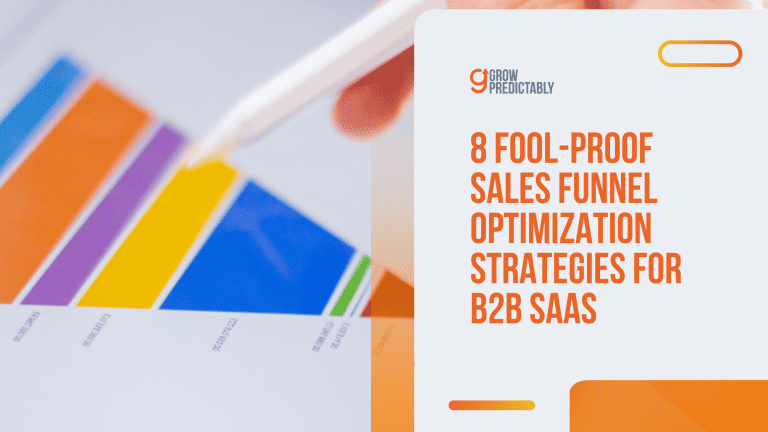Scale Your Content Now with Programmatic SEO Best Practices!
There’s a way to publish 50+ high-value pages a week—without wrecking your SEO or burning out your team.
It’s called programmatic SEO, and when done right, it scales like a machine.
Done wrong? You’ll flood the web with junk that Google ignores.
This guide shows how SaaS teams stay on the right side of that line, building on programmatic SEO best practices and pulling in compounding traffic growth.
ClickUp didn’t scale by guessing. Neither did G2…
They followed a proven playbook.
And that’s what we’re sharing today.
What is Programmatic SEO or pSEO?
According to 50% of marketers, SEO remains a top driver of ROI compared to other marketing strategies. (Source)
But what if there’s a better way of doing SEO? This is where pSEO comes into play.
Programmatic SEO automates the creation of large-scale, search-optimized web pages using templates and data.
It streamlines processes, allowing businesses to target specific search intents efficiently.
With 68% of online experiences beginning with a search engine, programmatic SEO becomes essential for businesses aiming to increase visibility and attract organic traffic. (Source)
By leveraging automation and structured data, programmatic SEO expands online visibility and engagement while freeing resources to focus on strategic planning and quality control.
Traditional SEO vs. Programmatic SEO
| Aspect | Traditional SEO | Programmatic SEO |
|---|---|---|
| Scale | Manual, limited | Automated, unlimited |
| Time to publish | Days or weeks | Minutes or hours |
| Customization | High, but time-heavy | Template-based, fast |
| Resource needs | Heavy writing staff | Small, technical team |
| Updates | Manual edits needed | Bulk updates possible |
The Backbone of Programmatic SEO
Imagine creating thousands of high-quality web pages that match exactly what your customers search for – without spending months writing each one by hand.
That’s the magic of programmatic SEO.
Programmatic SEO helps B2B SaaS companies build search-optimized landing pages or web pages at scale using templates, automation, and data.
Think of it like a smart factory for web content – you set up the system once, and it keeps producing valuable programmatic pages that bring in targeted traffic.
Let’s break down the three key pillars that make this work:
1. Scalability Through Smart Templates
Your content needs to grow with your business.
Programmatic SEO uses modular templates to create thousands of unique pages that match specific search intent.
Each page template acts like a recipe – swap in different ingredients (keywords, data, examples), and you get fresh, relevant content every time.
2. Targeting Long-tail Keywords
Targeting long-tail keywords is crucial for generating high organic traffic.
These keywords consist of longer phrases that are more specific and less competitive.
By targeting these long-tail keywords, programmatic SEO can leverage niche content opportunities and fill content gaps that drive substantial search traffic.
These keywords offer numerous permutations, enabling the creation of diverse content that meets varied user intents.
By encompassing niche areas with less competition, long-tail keywords enhance visibility and relevance, increasing the potential for higher organic search traffic.
3. Quality-First Approach
Here’s where many get it wrong – they sacrifice quality for quantity.
Google’s Helpful Content Guidelines make it clear: Every page must deliver real value to search engines and readers.
No shortcuts, no fluff.
When incorporating value into your content, it helps to remember these statistics.
- The average reader spends only 37 seconds reading a blog, highlighting the need for engaging and concise content. (Source)
- 62% of B2B buyers prefer practical content like case studies to inform their decisions, citing a need for valid sources. (Source)
- Google prioritizes unique content that offers substantial value compared to other pages, using metrics like “information gain score” to rank results. (Source)
4. Power of Automation
Skip the tedious stuff.
Automation handles repetitive tasks like:
- Grouping related keywords
- Optimizing page elements
- Publishing new content
- Updating existing pages
This frees up your team to focus on strategy and quality control.
Real success stories show how powerful this approach can be in capturing diverse search queries.
Take ClickUp – they used structured templates and smart internal linking to build thousands of targeted pages.
Their traffic shot up as they ranked for countless software-related searches.
G2 followed a similar path, creating comparison pages for software categories.
Their template-based programmatic pages helped them dominate long-tail keywords across the B2B software space.
Best Practices Summary
- Focus on search terms that show clear user intent
- Build templates that personalize content at scale
- Set strict quality standards before automation
- Test small batches before scaling up
But here’s the burning question: How can you launch your first scalable content engine?
Let’s break it down step-by-step in the next section.
Step-by-Step Guide to Implementing Programmatic SEO
Imagine this: You’re ready to scale your content, but the thought of creating thousands of pages makes your head spin.
Don’t worry!
I’ve broken down programmatic SEO into bite-sized steps you can tackle, even with a small team, enabling you to efficiently create programmatic pages.
From my experience working with SaaS companies, starting small and validating each step prevents major headaches later.
Let’s dive into the key phases:
Step 1: Keyword Research & Validation
Start your keyword research by finding scalable patterns in your target keywords.
Scalable keywords
A scalable keyword is a flexible search term with significant search volume that can be adapted and expanded to other variations, matching different user intents.
It’s broad enough to include multiple variations, like adding industry-specific modifiers or comparisons, enabling you to create numerous targeted pages.
This helps effectively capture diverse search traffic without losing focus on your core topic.

Here’s how to get started with scalable keyword research:
- Fire up Ahrefs or SEMrush and look for head terms (like “CRM software”).
- Find modifier patterns (like “for [industry]” or “vs [competitor]”).
- Export search data and group similar terms.
- Check search intent – make sure the terms match what you’ll deliver.
To put this more simply, here’s an example of how you can apply our guide above:
- Utilize tools like Ahrefs or SEMrush to identify head terms. For instance, search “CRM software.”
- Discover modifier patterns: look for combinations like “CRM software for healthcare” or “CRM software vs Salesforce.”
- Export relevant search data, and group similar terms using Excel or Google Sheets.
- Assess search intent by analyzing top-ranking pages. Confirm alignment with your planned content.
- Use SERP similarity reports to avoid keyword cannibalization. If terms are too similar—such as “CRM software for doctors” and “CRM solutions for healthcare”—consolidate them to clarify Google’s understanding.
By systematically validating these keywords, you ensure precise targeting and efficient content production, avoiding wasted efforts.
PRO TIP: Pull SERP similarity reports to avoid keyword cannibalization.
If pages look too similar, Google might get confused about which to rank.
Start by cleaning the data: remove duplicates, irrelevant keywords, and non-essential columns to ensure you’re left with only relevant data.
Use filters to categorize keywords by metrics such as search volume and keyword difficulty.
Create separate tabs for head terms and modifiers, ensuring logical grouping.
Golden Nugget: Use conditional formatting to highlight keywords with decent search volume yet low difficulty—these are prime targets.
Additionally, apply pivot tables to visualize keyword groups and patterns.
Consistently structured data facilitates clearer insights and streamlined decision-making for your content strategy.
Step 2: Template Creation
Templates streamline the creation of large volumes of web pages by providing a consistent and structured format.
They enable quick customization using dynamic fields, ensuring each page is tailored to specific user intents while maintaining efficiency and scalability.
Templates simplify content production, allowing businesses to rapidly expand their online presence without sacrificing quality.
Now let’s build your content engine:
- Map out distinct search intents (comparison, features, reviews).
- Create a base page template for each intent type.
- Add dynamic fields for personalization:
- Industry-specific features
- Use case examples
- Customer review snippets
- Pricing comparisons
Drawing from my content automation work, I’ve found that keeping templates simple at first leads to better results.
You can always add complexity later.
Recommended Tools for Template Creation
- Canva Whiteboard: For easy and collaborative visual template design.
- Airtable: To organize and manage content elements effectively.
- Google Sheets: For tracking data and integrating with templates.
- Figma: To design dynamic and interactive content layouts.
- Notion: To plan and document template structures and workflows.
- Trello: For managing projects and tracking template creation progress.

These tools can help streamline the process and improve the efficiency of your programmatic SEO campaigns.
What you need are SEO-friendly templates
To ensure SEO-friendly templates:
- Optimize Metadata: Include relevant title tags and meta descriptions.
- Use Header Tags: Structure content with H1, H2, and H3 tags.
- Embed Keywords Naturally: Integrate target keywords without overstuffing.
- Focus on Load Speed: Optimize images and minimize code for faster loading.
- Implement Internal Linking: Connect to related pages within your site.
- Ensure Mobile-Friendliness: Design templates to be responsive on all devices.
IMPORTANT:
To maintain E-E-A-T in programmatic SEO, integrate expertise and authority by sourcing credible data and maintaining accuracy.
Ensure trustworthiness through content verification and consistent updates.
Use AI for efficiency, but balance it with human oversight to validate and refine content quality.
Prioritize user intent by understanding and addressing specific needs with personalized, authoritative, and well-documented information, ensuring it aligns with Google’s E-E-A-T principles and enhances user experience.
Step 3: Automation & Publishing
Even if you search across the web, results will show you that many leverage the tool Airtable when automating data integration in their programmatic SEO efforts.
Airtable’s pSEO use case has driven impressive results, generating up to hundreds of thousands of monthly organic traffic for brands across different industries.
Here’s how Airtable can be leveraged for programmatic SEO, based on insights from its successful use cases:
How Airtable Facilitates Programmatic SEO

- Database-Driven Content Creation: Airtable allows users to store structured data, such as keywords, descriptions, and templates, in a centralized database. This data can then be used to dynamically generate landing pages targeting specific keywords or user queries. For example:
- Airtable created pages targeting
{document type} templates(e.g., “Project Management Templates”) with elements like sample templates, detailed descriptions, and related resources1. - Pages targeting
{category} universe(e.g., “Education Universe”) featured shared resources, maker names, and category lists.
- Airtable created pages targeting
- Integration with Webflow and Whalesync: Airtable can be integrated with Webflow using tools like Whalesync to automate the creation of SEO-friendly pages without coding expertise. This setup ensures seamless syncing of data between platforms, enabling rapid deployment of optimized content.
- Automated SEO Management: Using plugins like Air WP Sync, Airtable can sync SEO fields (e.g., meta descriptions and meta titles) directly with WordPress websites. This streamlines workflows and eliminates manual errors.
Time to put your system into action:
- Set up your automation workflow by connecting Airtable to your CMS and adding QA checkpoints.
- Start with 10 test pages.
- Watch Google Search Console for indexing issues.
- Scale up gradually based on performance.
To allow for easy monitoring, even with the automated generation of your pSEO web pages, it’s wise to start things in moderation.
Don’t lose control and quality of your web pages just because automation is at your disposal.
Keep these best practices in mind:
✅ Start with 1-2 page types max
✅ Validate each keyword cluster before scaling
✅ Keep humans in the review loop
✅ Monitor performance weekly
Based on my work with dozens of clients, rushing to publish without proper validation is the fastest way to waste resources.
But here’s the thing – you might be wondering what could go wrong even with this solid foundation.
What hidden pitfalls could derail your progress?
Let’s explore those dangers in our next section…
Just remember that building a scalable content engine takes patience.
Focus on getting each step right before moving to the next.
Your future self will thank you.
Tools to Make Programmatic SEO Easier
| Category | Tools | Use |
|---|---|---|
| Keyword Research Tools | Ahrefs | Perfect for spotting keyword patterns and modifier opportunities. Shows related terms you might’ve missed. |
| SEMrush | Reveals competitor keyword gaps and finds juicy long-tail variations. Complementary with Ahrefs for different angles. | |
| Content Generation & Optimization | ChatGPT | Connects through APIs to create dynamic content blocks, like product descriptions or feature comparisons. |
| SurferSEO | Analyzes top-ranking pages, providing clear optimization targets. Can be integrated with Google Sheets for quality checks. | |
| Automation Workflows | Airtable | A flexible database that organizes structured data, which can be seamlessly integrated with tools like Webflow or WordPress. |
| Zapier | Links tools together, automating processes like creating new pages in your CMS based on new spreadsheet data. | |
| Internal Linking & Quality Assurance | Screaming Frog | Catches technical issues, acting as a 24/7 quality control team. |
| LinkWhisper | Suggests relevant connections between pages to ease internal linking. |
But of course, generating the results you want shouldn’t depend fully on the tools you use. We also need to put effective systems in place.
Aside from these highly recommended tools, you can increase the efficiency of your programmatic SEO campaign by keeping these in mind:
✅ Test every tool in a sandbox environment first.
✅ Keep human editors in the loop for E-E-A-T content.
✅ Monitor these KPIs for each tool:
- Output Speed: How quickly can you generate new pages?
- Volume Scalability: Can it handle 1000+ pages without breaking?
- Quality Control Pass Rate: What percentage meets your standards?
In some cases, teams have the tendency to rush into full automation without proper testing—this can be counterproductive.
Start with 10-20 test pages to work out the kinks.
Yes, these tools are powerful, but they’re just that – tools.
Your strategy and quality standards should drive how you use them.
Next up, we’ll explore real-world examples of how top companies put these tools into action.
But first, why not take one of these tools for a test drive?
Start small, maybe with Screaming Frog’s free version, to get a feel for what’s possible.
Case Study: Zapier Quadrupled Organic Traffic Through pSEO
Zapier, a leading automation platform, implemented programmatic SEO to achieve remarkable growth, scaling its organic traffic from 1.19 million to nearly 5 million monthly users in just three years.
Their innovative approach drove this success in creating thousands of optimized pages at scale.
How Zapier Did It
Zapier’s strategy revolved around automating the creation of individual pages for every app they support and all possible app combinations. These pages included:
- Short descriptions of each app.
- Lists of compatible apps and workflows.
- Clear calls-to-action to encourage user engagement.
- Supported triggers and actions, tailored to user needs.
- Internal linking to related blogs, relevant data, and resources for added value.
Using their extensive database, Zapier dynamically generated these pages with pre-programmed templates.
Each page targeted specific long-tail keywords, ensuring relevance for niche search queries.
This approach not only enhanced search visibility but also provided highly actionable content for users exploring automation solutions.
Results and Takeaways
Zapier’s programmatic SEO efforts led to exponential growth in organic traffic, with their /apps/ pages ranking for countless niche keywords.
This strategy also reduced content creation costs while maintaining high-quality output.
What You Can Learn:
- Automate Content Creation: Use databases and templates to generate pages targeting specific keywords.
- Focus on User Needs: Ensure each page delivers actionable insights or solutions.
- Leverage Internal Linking: Build a strong site structure to improve navigation and SEO authority.
By adopting Zapier’s approach, businesses can efficiently scale content while driving significant traffic and engagement.
Avoiding Common Pitfalls in Programmatic SEO
Great job, you’ve built your programmatic SEO foundation! But hold on a moment…
I’ve seen too many smart teams stumble right when scaling starts working.
Let’s walk through the major pitfalls and how to dodge them.
Thin Content: The Silent Traffic Killer
Do you remember that time Google penalized millions of doorway pages? Here’s why – they didn’t help users.
Make sure that your programmatically generated pages don’t experience the same.
When scaling content, quality can’t take a backseat.
How to Fix it:
- Use canonical tags to point similar pages to your strongest version.
- Pack each page with unique insights, not just swapped keywords.
- Run content through natural language tools to ensure readability.
PRO TIP: Create a “minimum value checklist” for each page template.
If the page template doesn’t hit every mark, don’t publish it.
Orphaned Pages: The Hidden Growth Blocker
Imagine building thousands of pages… but Google can’t find half of them.
That’s what happens when pages get orphaned – no internal links pointing to them.
How to Prevent it:
- Map out hub-and-spoke internal linking before scaling.
- Build automated link rules into your templates.
- Check crawl depth weekly using site audit tools.
The Automation Trap
I learned this one the hard way – trying to automate everything can backfire.
Content needs human touchpoints.
Guard Rails that Work:
- Review 10% of published pages manually.
- Set up content scoring for web pages with tools like SurferSEO.
- Keep verified data (stats, reviews, features) separate from generated content.
Programmatic SEO Pitfall Defense Checklist
This checklist is designed to guide you through the crucial steps necessary to avoid common pitfalls in your programmatic SEO efforts.
With this checklist, you can ensure that your content maintains quality, aligns with user intent, and adheres to SEO best practices.
✅ Have you conducted a weekly crawl depth audit to ensure all pages are accessible?
✅ Are there clear rules for when a template should be published or held back?
✅ Does each template pass the “minimum value checklist”?
✅ Is there a quality scoring system in place for assessing page content?
✅ Have human reviewers checked at least 10% of the new pages?
✅ Are statistics, reviews, and features accurately verified and distinct from generated content?
✅ Have you mapped out an effective hub-and-spoke internal linking structure?
✅ Is there a scheduled routine for manual review to ensure content relevance and accuracy?
✅ Are automated linking rules incorporated into templates?
✅ Does each page genuinely meet user search intent and provide unique value?
Use this checklist to consistently question and refine your approach, ensuring quality SEO practices at scale.
Trust takes months to build but seconds to break…
Each page you publish either builds or damages that trust with Google and users.
Think of programmatic SEO like cooking – you can use machines to prep ingredients, but you still need a chef’s taste test before serving. Keep that balance, and you’ll scale smoothly while keeping quality high.
FAQs
Programmatic SEO Doesn’t Have To Be Complicated
Ready to jumpstart your programmatic SEO journey?
Begin by identifying scalable keywords specific to your B2B SaaS niche.
For example, consider terms like “enterprise-grade data visualization tools” or “workflow automation solutions for remote teams.”
Use tools like Ahrefs or SEMrush to explore these keywords, identifying modifier patterns to capture varied user intents.
Plan by crafting templates that address distinct search intents: comparisons, features, and reviews. Keep them simple yet flexible, allowing for dynamic personalization.
Set a timeline:
- Week 1: Conduct keyword research and map out search intents.
- Week 2-3: Design templates and test them with initial content.
- Week 4: Begin automating with Airtable, connecting it to your CMS.
With this guide, you can launch swiftly and effectively.
Embrace the power of programmatic SEO and watch your content scale effortlessly, driving traffic and engagement to your B2B SaaS business.
Achieving your SEO goals has never been more accessible!








